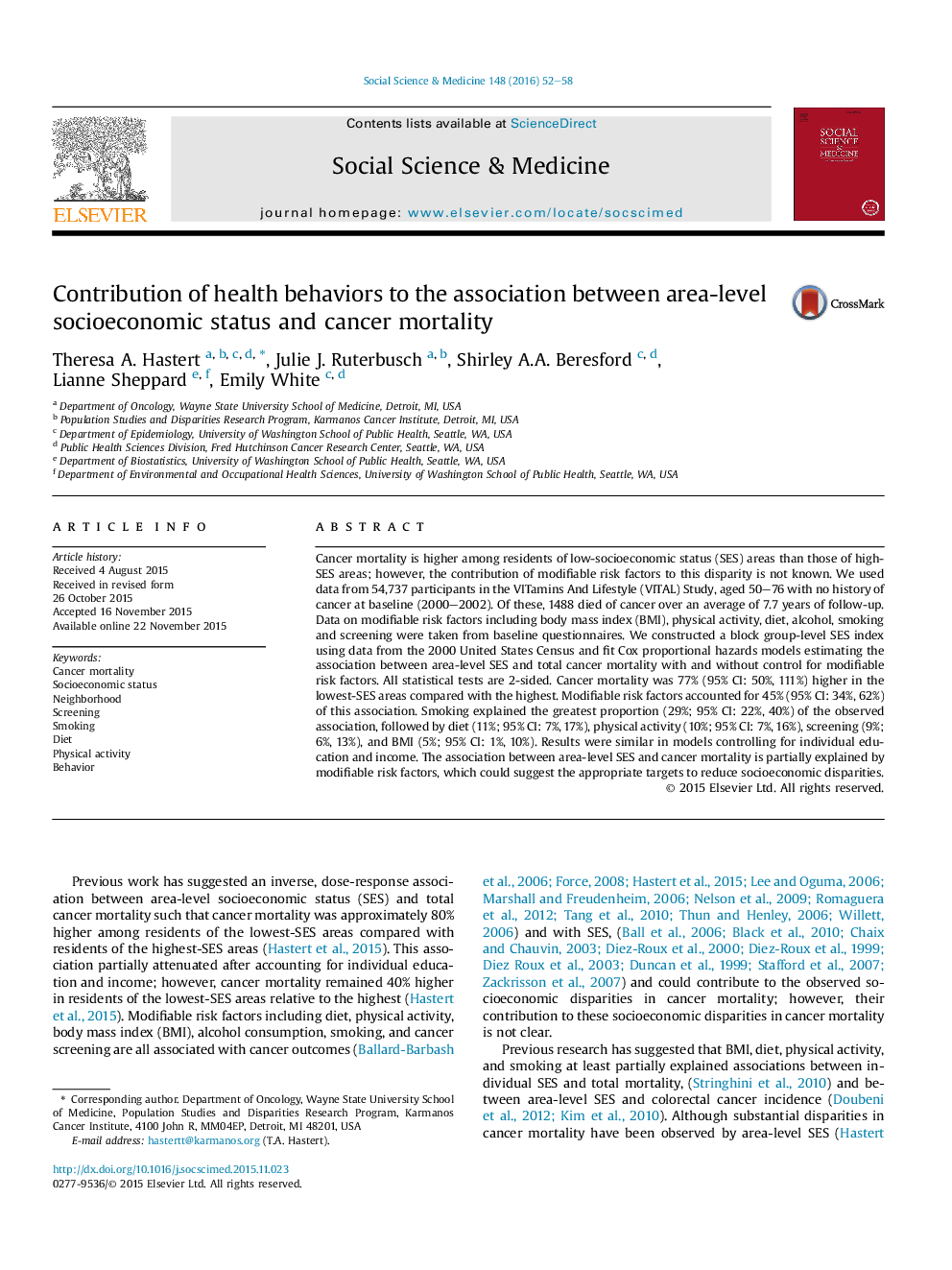| Article ID | Journal | Published Year | Pages | File Type |
|---|---|---|---|---|
| 7331058 | Social Science & Medicine | 2016 | 7 Pages |
Abstract
Cancer mortality is higher among residents of low-socioeconomic status (SES) areas than those of high-SES areas; however, the contribution of modifiable risk factors to this disparity is not known. We used data from 54,737 participants in the VITamins And Lifestyle (VITAL) Study, aged 50-76 with no history of cancer at baseline (2000-2002). Of these, 1488 died of cancer over an average of 7.7 years of follow-up. Data on modifiable risk factors including body mass index (BMI), physical activity, diet, alcohol, smoking and screening were taken from baseline questionnaires. We constructed a block group-level SES index using data from the 2000 United States Census and fit Cox proportional hazards models estimating the association between area-level SES and total cancer mortality with and without control for modifiable risk factors. All statistical tests are 2-sided. Cancer mortality was 77% (95% CI: 50%, 111%) higher in the lowest-SES areas compared with the highest. Modifiable risk factors accounted for 45% (95% CI: 34%, 62%) of this association. Smoking explained the greatest proportion (29%; 95% CI: 22%, 40%) of the observed association, followed by diet (11%; 95% CI: 7%, 17%), physical activity (10%; 95% CI: 7%, 16%), screening (9%; 6%, 13%), and BMI (5%; 95% CI: 1%, 10%). Results were similar in models controlling for individual education and income. The association between area-level SES and cancer mortality is partially explained by modifiable risk factors, which could suggest the appropriate targets to reduce socioeconomic disparities.
Keywords
Related Topics
Health Sciences
Medicine and Dentistry
Public Health and Health Policy
Authors
Theresa A. Hastert, Julie J. Ruterbusch, Shirley A.A. Beresford, Lianne Sheppard, Emily White,
